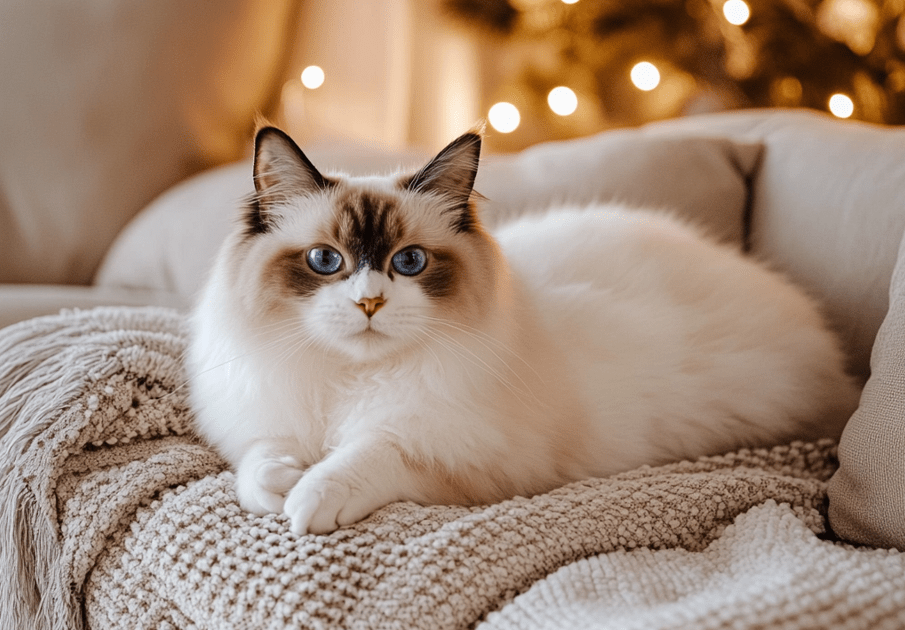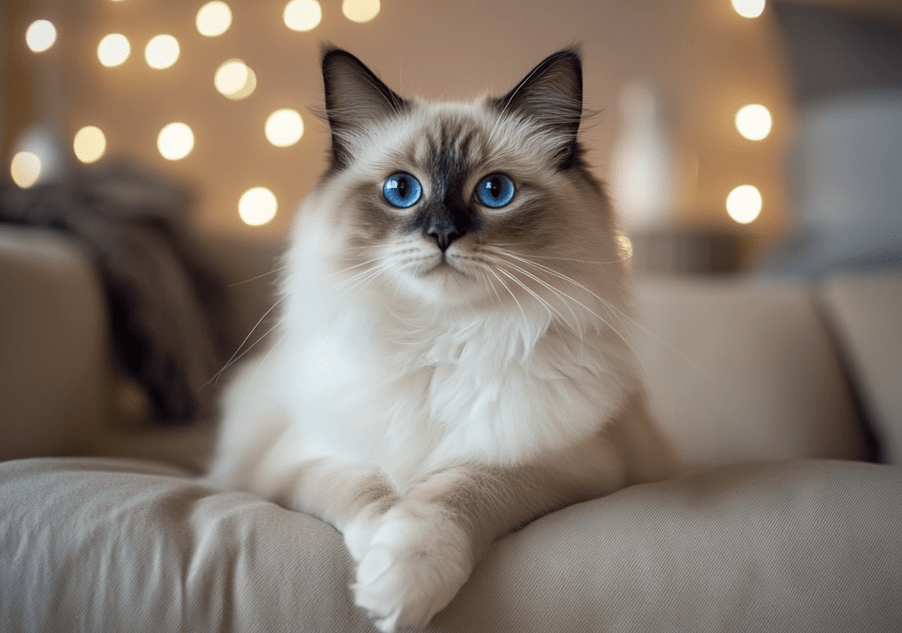
Clingy behavior in a Ragdoll cat is a common trait that endears these gentle, affectionate felines to their owners, but it can sometimes feel overwhelming. Known for their docile nature and striking blue eyes, Ragdolls often follow their humans, demand attention, or seek constant physical closeness. While this behavior reflects their loving personality, it can lead to stress for both cat and owner if not managed properly. This comprehensive guide explores the causes of clingy behavior in Ragdoll cats and offers practical, stress-free strategies to balance their need for affection with your need for space.
Introduction to Ragdoll Cats and Their Affectionate Nature
Ragdolls are one of the most affectionate cat breeds, often described as “puppy-like” due to their tendency to follow their owners, flop into their laps, and seek constant companionship. The phrase clingy behavior Ragdoll cat perfectly captures this endearing yet sometimes challenging trait. While their devotion is heartwarming, excessive clinginess can signal underlying needs or issues that require attention. Understanding and managing this behavior is key to fostering a harmonious relationship with your Ragdoll.
In this article, we’ll delve into why Ragdolls exhibit clingy behavior, from their breed characteristics to environmental factors, and provide actionable solutions to handle it without stress. From enrichment strategies to training tips, this guide is designed to be the ultimate resource for Ragdoll owners seeking to nurture their cat’s affectionate nature while maintaining balance.
Understanding Clingy Behavior in Ragdoll Cats
Clingy behavior in Ragdolls manifests in various ways, such as following you from room to room, meowing for attention, pawing at you, or insisting on physical contact. While this is often a sign of love, it can also indicate unmet needs or stress. To address it effectively, it’s essential to understand the root causes and distinguish normal affection from excessive clinginess.
What Does Clingy Behavior Look Like?
Shadowing: Your Ragdoll follows you everywhere, even to the bathroom.
Vocalizing: Excessive meowing or crying when you’re out of sight.
Physical Contact: Constantly rubbing against you, jumping into your lap, or sleeping on you.
Attention-Seeking: Pawing, nudging, or interrupting your activities to gain focus.
Separation Anxiety: Distress when left alone, such as destructive behavior or excessive grooming.
Why Are Ragdolls Prone to Clinginess?
Ragdolls are bred for their sociable, people-oriented nature, making clinginess a hallmark of the breed. Their desire for human interaction stems from:
Breed Traits: Ragdolls are genetically predisposed to form strong bonds with their owners, often preferring human company over solitude.
Intelligence: Their high intelligence means they seek mental stimulation, often through interaction with you.
Sensitivity: Ragdolls are sensitive to changes in their environment, which can amplify clingy behavior during stress.
Common Causes of Clingy Behavior in Ragdoll Cats
To manage clingy behavior, it’s crucial to identify its triggers. Below are the most common causes of excessive clinginess in Ragdolls, along with insights into how they manifest.
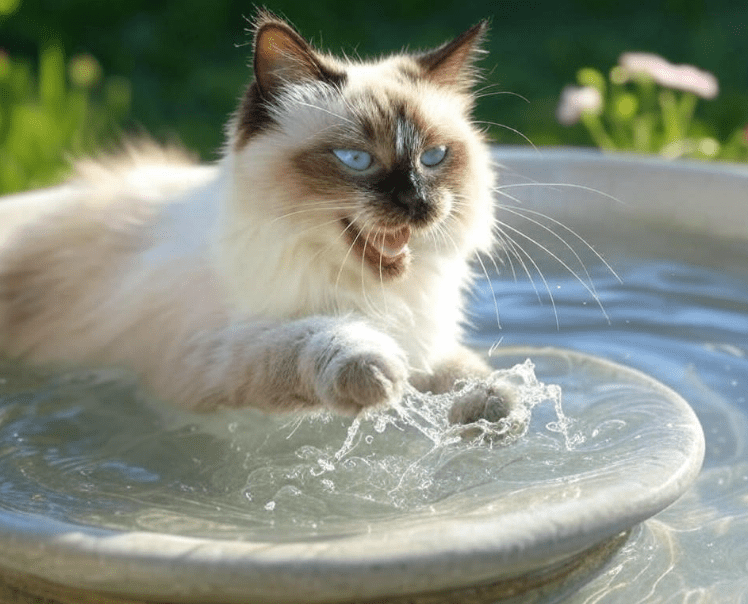
1. Need for Attention and Bonding
Ragdolls thrive on human interaction and may become clingy if they feel they’re not getting enough attention.
Manifestation: Following you, meowing, or interrupting tasks to engage you.
Trigger: Busy schedules or reduced playtime can leave them feeling neglected.
2. Lack of Mental or Physical Stimulation
Boredom can lead to clingy behavior as Ragdolls seek stimulation from their owners.
Manifestation: Excessive vocalizing or demanding play when understimulated.
Trigger: Limited toys, lack of enrichment, or insufficient exercise.
3. Environmental Changes or Stress
Ragdolls are sensitive to disruptions, such as moving, new pets, or changes in routine, which can increase clinginess.
Manifestation: Clinging to you for comfort or hiding when stressed.
Trigger: Household changes, loud noises, or unfamiliar visitors.
4. Separation Anxiety
Ragdolls form strong attachments and may struggle when left alone, leading to clingy behavior when you’re present.
Manifestation: Distress when you leave or intense attachment upon your return.
Trigger: Long periods alone or inconsistent schedules.
5. Medical Issues
Undiagnosed health problems can cause discomfort, prompting clinginess as a way to seek comfort or signal distress.
Manifestation: Sudden clinginess paired with symptoms like lethargy or appetite changes.
Trigger: Pain, urinary issues, or chronic conditions like arthritis.
6. Lack of Training or Boundaries
Without clear boundaries, Ragdolls may develop habits like constant attention-seeking.
Manifestation: Ignoring personal space or demanding attention at inappropriate times.
Trigger: Inconsistent responses to their behavior.
How to Handle Clingy Behavior in Ragdoll Cats Without Stress
Managing clingy behavior in Ragdoll cats requires a balance of meeting their emotional and physical needs while setting healthy boundaries. Below are vet-approved, stress-free strategies to address clinginess effectively.
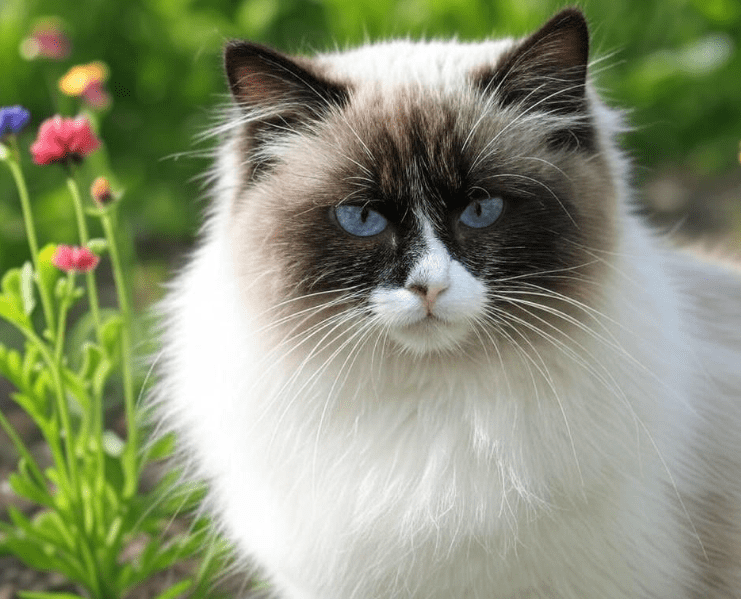
1. Provide Ample Attention and Bonding Time
Dedicate quality time to your Ragdoll to satisfy their need for companionship.
Daily Interaction: Spend 15–20 minutes twice a day on focused play or cuddling.
Engaging Activities: Use feather wands, laser pointers, or puzzle toys to bond through play.
Routine Affection: Incorporate petting or lap time into your daily schedule to create predictability.
2. Enrich Their Environment
A stimulating environment reduces boredom and redirects clingy behavior to independent activities.
Interactive Toys: Offer puzzle feeders, treat balls, or motorized toys to engage their intelligence.
Vertical Spaces: Install cat trees or shelves for climbing and perching, appealing to their curious nature.
Window Views: Set up a window perch for bird-watching to keep them entertained.
Rotate Toys: Introduce new toys weekly to maintain interest.
3. Address Separation Anxiety
Help your Ragdoll feel secure when alone to reduce clinginess when you’re home.
Gradual Desensitization: Practice short absences, starting with a few minutes, and gradually increase duration.
Comfort Items: Leave a worn shirt or blanket with your scent to provide reassurance.
Background Noise: Play soft music or a TV to create a calming atmosphere.
Pet Cameras: Use interactive cameras to check in or dispense treats remotely.
4. Set Clear Boundaries with Positive Reinforcement
Training your Ragdoll to respect your space prevents clinginess from becoming overwhelming.
Redirect Attention: If your cat demands attention, offer a toy or redirect to a perch.
Reward Independence: Praise or treat your Ragdoll when they play alone or rest quietly.
Consistent Responses: Ignore excessive meowing or pawing, but reward calm behavior.
Designated Spaces: Create a cozy bed or nook where your cat can relax independently.
5. Rule Out Medical Issues
Sudden or extreme clinginess may indicate health problems, so consult a veterinarian.
Comprehensive Exam: Request a full checkup, including bloodwork and urinalysis, to identify issues.
Monitor Symptoms: Note changes in appetite, litter box habits, or energy levels to share with your vet.
Pain Management: Follow vet recommendations for treating conditions that may cause discomfort.
6. Create a Stress-Free Environment
A calm, predictable environment reduces anxiety-driven clinginess.
Safe Spaces: Provide hiding spots or quiet areas where your Ragdoll can retreat.
Consistent Routine: Maintain regular feeding, play, and sleep schedules.
Minimize Triggers: Reduce exposure to loud noises, sudden changes, or unfamiliar people when possible.
7. Use Enrichment Tools Like Puzzle Feeders
Puzzle feeders engage your Ragdoll’s mind, reducing their reliance on you for stimulation.
How They Help: Feeders challenge problem-solving skills and mimic foraging, keeping your cat occupied.
Top Picks: Try the Catit Senses Food Tree or Trixie Activity Fun Board for Ragdolls.
Introduction: Start with simple feeders and gradually increase difficulty.
8. Consider a Companion
If your Ragdoll is alone for long periods, a second pet may provide companionship and reduce clinginess.
Compatibility: Choose a calm, friendly cat or pet to match your Ragdoll’s temperament.
Gradual Introductions: Use scent swapping and controlled meetings to ensure a smooth transition.
Consult a Vet: Ensure both pets are healthy and compatible before introducing them.
9. Consult a Feline Behaviorist
For persistent clinginess, a professional behaviorist can offer tailored strategies.
When to Seek Help: If clinginess disrupts your life or your cat shows signs of distress.
What They Do: Assess your cat’s environment, behavior, and routine to create a customized plan.
Finding One: Ask your vet for recommendations or contact certified feline behaviorists.
Preventing Clingy Behavior in Ragdoll Cats
Proactive measures can minimize clinginess before it becomes a challenge:
Early Socialization: Expose your Ragdoll kitten to various people, environments, and alone time to build confidence.
Consistent Training: Establish boundaries from kittenhood to encourage independence.
Regular Enrichment: Provide toys, puzzles, and activities to keep your cat engaged.
Health Monitoring: Schedule annual vet checkups to catch and address issues early.
Common Mistakes to Avoid
When managing clingy behavior, steer clear of these pitfalls:
Reinforcing Clinginess: Giving attention during excessive meowing or pawing encourages the behavior.
Punishing Your Cat: Yelling or scolding can increase anxiety and worsen clinginess.
Neglecting Enrichment: Failing to provide mental stimulation leads to boredom and attention-seeking.
Ignoring Health Issues: Dismissing sudden clinginess as “normal” may overlook medical problems.
Conclusion
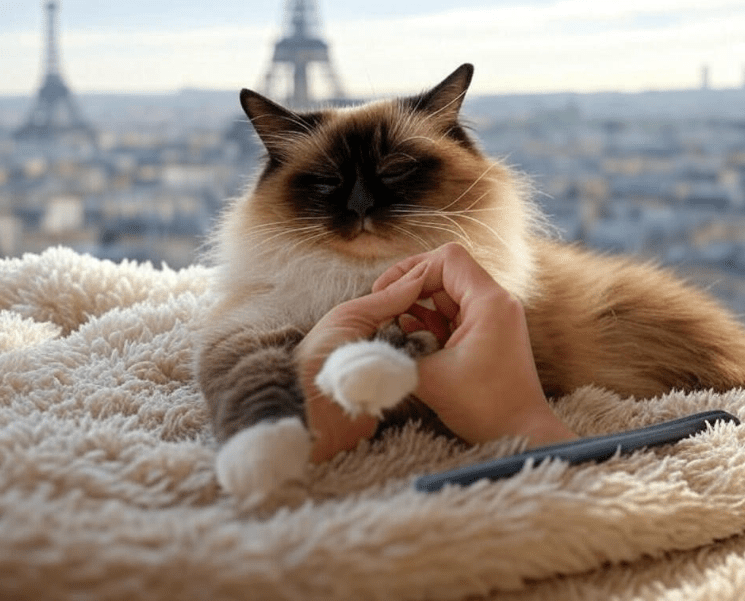
Clingy behavior in a Ragdoll cat is a testament to their loving, social nature, but it can be managed without stress through understanding and proactive strategies. By providing ample attention, enriching their environment, setting boundaries, and addressing potential health or stress triggers, you can nurture your Ragdoll’s affection while fostering independence. With patience and consistency, you’ll create a balanced, harmonious relationship that allows both you and your Ragdoll to thrive.
For personalized guidance, consult your veterinarian or a feline behaviorist. Your Ragdoll’s devotion is a gift—handle it with care, and you’ll enjoy a rewarding bond for years to come.


